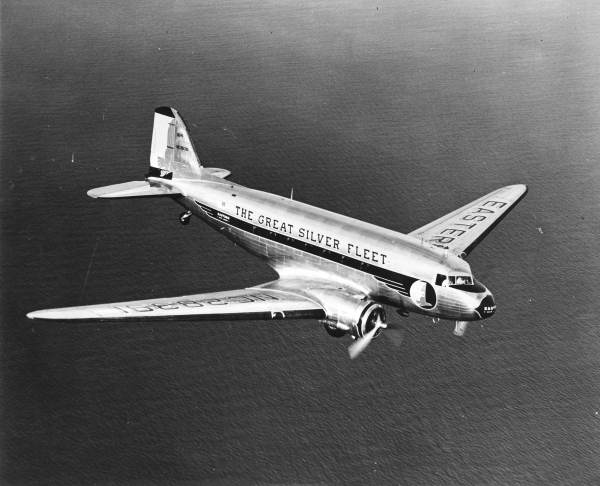The Golden Years and Technology – Part Two – The Douglas Airliners – July 21, 2023

The Golden Years and Technology – Part One – The Boeing 247 Airliner – July 14, 2023
July 14, 2023
The Golden Years and Technology – Part Three – The Clippers of Pan Am – July 28, 2023
July 28, 2023Good Morning,
This Friday we are continuing with our series on the airplanes that made commercial aviation possible and this week we talk about the greatest airliner of all time. As always I would like all aviators to connect with their roots and one of the ways they can do that is by using the “Third Dimension Blog” as a resource.
Quote of the Week
“Flying was a very tangible freedom. In those days, it was beauty, adventure, discovery — the epitome of breaking into new worlds.”— Anne Morrow Lindbergh’s introduction to:”Hour of Gold, Hour of Lead” 1929
The Douglas Airliners
Donald Douglas was initially reluctant to participate in the invitation from TWA to build a new airplane. He doubted there would be a market for 100 aircraft which was the number of sales necessary to cover development costs. Nevertheless, he submitted a design consisting of an all-metal, low-wing, twin-engine aircraft seating twelve passengers, a crew of two, and a flight attendant. The aircraft was insulated against noise, heated, and fully capable of both flying and performing a controlled takeoff or landing on one engine.
Only one aircraft was produced and it made its maiden flight on July 1, 1933 flown by Carl Cover. The plane was given the model name “DC-1”. During a half year of testing, it performed more than 200 test flights and demonstrated its superiority over the most used airliners at that time. In addition, a new speed record was set when the DC-1 was flown across the United States in a record time of 13 hours and 6 minutes.
TWA accepted the model with a few modifications—mainly increasing seating to 14 passengers and adding more powerful engines—and ordered twenty aircraft. The production model was called the “DC-2”.
The DC-2 was an instant hit. In its first six months of service, the DC-2 established 19 American speed and distance records. In 1934, TWA put the DC-2 on overnight flights from New York to Los Angeles, CA. and called the service The Sky Chief. The flight left New York at 4 p.m. and after stops in Chicago, Kansas City and Albuquerque, it arrived in Los Angeles at 7 a.m. For the first time the air traveler could fly from coast to coast without losing the business day.
The DC-2 was the first Douglas airliner to enter service with an airline outside the United States. In October 1934, KLM Royal Dutch Airlines entered one of its DC-2 aircraft in the London-to-Melbourne air race. It made every scheduled passenger stop on KLM’s regular 9,000 mile route—1,000 miles longer than the official race route— carried mail and even turned back once to pick up a stranded passenger. Yet the DC-2 finished in second place behind a racing plane built especially for the competition. After that, the reputation of the Donald Douglas creation was assured and it became the airplane of choice for many of the world’s largest airlines.
Early U.S. airlines like United, American, Eastern and TWA ordered over 400 of the Douglas Airliners and it is these fleets and these carriers that paved the way for our modern air travel industry in the United States, quickly replacing trains as the favored means of long-distance travel across the country.
Next week we will continue this series by highlighting the Clippers of Pan Am. Until then, take some time to look back, connect with your past and remember as an aviator you are a “Gatekeeper of the Third Dimension”.
Protect your profession, your future and the future of your fellow aviators.
Robert Novell
July 21, 2023
P.S. The rest of the page has a few pictures of the DC-1/2/3. These were borrowed from Holcomb’s Aerodrome located at http://www.airminded.net. Great website for all of us aviation enthusiast—take a look.

First flight: Dec. 17, 1935
Model number: DC-3
Wingspan: 95 feet Length: 64 feet 5.5 inches Height: 16 feet 3.6 inches
Ceiling: 20,800 feet
Range: 1,495 miles
Weight: 30,000 pounds
Power plant: Two 1,200-horsepower
Wright Cyclone radial engines Speed: 192 mph
Accommodations
3 crew and 14 sleeper passengers
Three crew and 21 to 28 day passengers
Two Crew and 3,725 to 4,500 pounds freight




